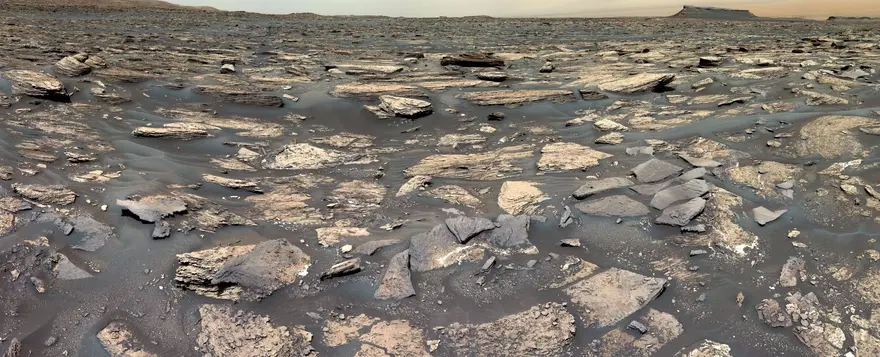Botanists and ecologists from the Chinese Academy of Sciences have discovered a plant that could one day be grown as an agricultural crop on Mars due to its ability to withstand harsh conditions. The desert moss Syntrichia caninervis manages to survive among the deadly majority of other life forms.
In a new study, scientists subjected this plant to extreme conditions to test its survival. “Our study shows that the resistance of S. caninervis to environmental influences exceeds that of other microorganisms and tardigrades,” the researchers write in their paper. “S. caninervis is a promising candidate for a pioneering role in the colonization of extraterrestrial environments, laying the foundation for the creation of biologically sustainable human habitats beyond Earth’s borders.”
This desert moss is one of the most common types of moss found all over the world, including Antarctica. Its stem is covered with small, sharp, thorn-like leaves that help collect water and transfer it to the stem. These leaves have tiny hairs on their ends to collect water, allowing the plant to make the most of it in an environment where water is only available in hard-to-reach forms like dew or fog.
First, the scientists placed some plants in a freezer at -80°C for three to five years, while others were placed in a tank of liquid nitrogen at -196°C for 15 and 30 days. In all three environments, the plants survived the thaw, but recovery was not as rapid as in samples that were simply dried rather than frozen.
The researchers also discovered that the plant can withstand high doses of gamma radiation that would kill most plants. The scientists found that 500 Gy of radiation actually supported the plant’s growth. For humans, 8 Gy is enough radiation to cause convulsions and death if exposed for long enough periods.
“Our results suggest that S. caninervis is one of the most radiation-resistant organisms known,” the researchers said.
While these tests revealed the impressive durability of S. caninervis, scientists went even further and placed the plant in a simulated Martian environment. Using the Planetary Atmosphere Modeling Facility of the Chinese Academy of Sciences, the researchers created an atmosphere consisting of 95% carbon dioxide with temperatures ranging from -60°C to -60°C. These conditions are as close as possible to those on Mars, with high levels of UV radiation of up to 20°C and low atmospheric pressure.
There is no water on Mars either, most of it is in the form of dry ice or trapped in polar ice caps. The lack of a magnetic field on Mars also means that any life on the surface would be exposed to higher levels of radiation than on Earth.
The stability of desert moss, according to the results of the tests, makes it a potential candidate for cultivation on Mars. This discovery could affect the future of space exploration and colonization.
Source: Port Altele
